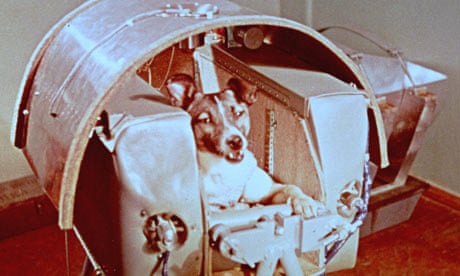Did you know that over a dozen species, from fruit flies and mice to dogs, tortoises and plants, have been sent into space to test how life copes beyond Earth's atmosphere? Many of these living passengers have returned safely, helping pave the way for human spaceflight. But here's something to stir your curiosity: long before humans ventured into orbit, there was one particular creature that took that first daring journey into space. This little pioneer didn't wear a spacesuit and isn't widely remembered today, yet it played a key role in opening the final frontier.
It was launched in 1947, survived high-altitude radiation testing, and helped prove that life could survive the edge of space. In this article, we'll take a look at that first living traveller, how it got there, what happened on the mission, and why it mattered so much for the future of space exploration.
What Was The First Animal To Go Into Space?
The first animal to orbit Earth was Laika, a stray dog from Moscow, launched by the Soviet Union aboard Sputnik 2 on November 3, 1957.
Why Laika was selected
Laika was chosen because she was small (about 5 kg) and calm. She came from the streets of Moscow, and space engineers believed stray dogs were already tough and adaptable to harsh conditions. Only female dogs were used in these early tests because they were easier to accommodate in the capsule design.
How she was trained
Laika went through intense preparation. She learnt to stay calm in tiny cabins. She was spun in centrifuges to get used to high g-forces and had to eat food in a gel form suited for spaceflight.
The mission & why she didn't return
On November 3, 1957, Sputnik 2 launched with Laika aboard. Unfortunately, the technology to bring her safely back to Earth did not exist yet—the flight was always a one-way trip. After a few hours in orbit, she died from overheating and stress, rather than the initially stated oxygen exhaustion.
Why her journey matters
Laika's flight proved that a living creature could survive launch and orbit around Earth. It paved the way for human spaceflight by giving critical biomedical data on how living systems respond in outer space.
Did The First Dog In Space Survive?

No, the first dog in space, Laika, did not survive. Laika was a small stray dog from Moscow who was launched into orbit by the Soviet Union on November 3, 1957, aboard Sputnik 2. At that time, space technology was still very new, and scientists had not yet developed a safe way to bring a spacecraft back to Earth. Laika's mission was mainly to test how a living creature would react to space conditions such as weightlessness, pressure, and temperature.
Sadly, just a few hours after launch, the cabin overheated due to a technical failure, and Laika died from heat and stress. The Soviet government initially claimed she had survived for several days, but decades later, it was revealed that she had passed away only a few hours into the mission. Even though Laika didn't survive, her mission provided valuable scientific data and became a significant step toward sending humans safely into space.
10 Facts About Laika, The First Dog To Orbit The Earth
- Laika was a stray found wandering the streets of Moscow before being chosen for space training.
- The Soviet Union launched its spacecraft Sputnik 2 on November 3, 1957.
- Laika became the first living creature to orbit the Earth, paving the way for human spaceflight.
- She was small and calm, weighing about 5–6 kilograms (about 11–13 pounds)—ideal for the small space capsule.
- Only female dogs were used in these early missions because they were easier to fit with waste-collection systems.
- Laika underwent intensive training, including confinement in small spaces, vibration tests, and centrifuge spins.
- Her food in space was a nutrient gel, designed to be eaten without gravity.
- Unfortunately, Laika died a few hours after launch due to overheating and stress, not oxygen failure as first reported.

- The Soviet Union initially said she survived for days, but the truth was revealed decades later.
- Laika's real name wasn't recorded: "Laika" simply means "barker" in Russian and refers to her breed type.
- Her spacecraft, Sputnik 2, was launched just one month after Sputnik 1, showing the speed of the Soviet space programme.
- Data from Laika's mission helped scientists understand how space travel affects breathing, heart rate, and stress levels in living beings.
- In 2008, Russia unveiled a monument in Moscow featuring Laika standing proudly atop a rocket, honouring her as a pioneer of space exploration.
- Laika's mission demonstrated that living organisms could survive launch and orbit, a crucial step toward human space travel.
- Today, monuments and memorials in Russia and around the world honour her as a space hero and symbol of sacrifice.

Comments
All Comments (0)
Join the conversation